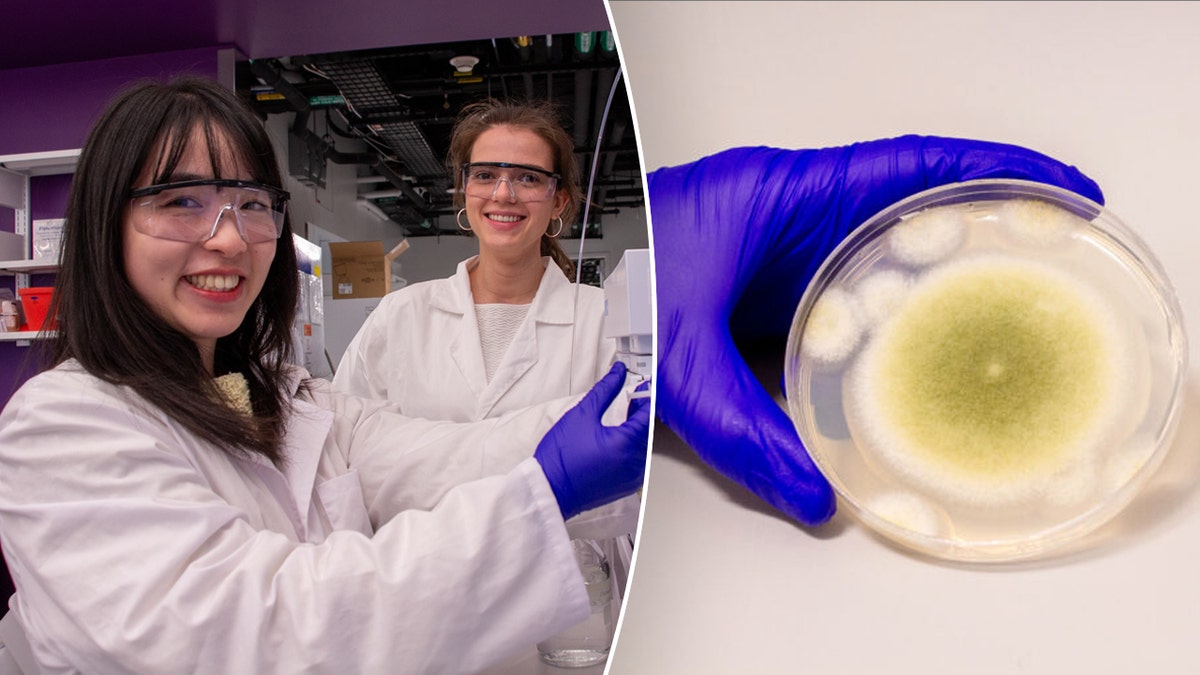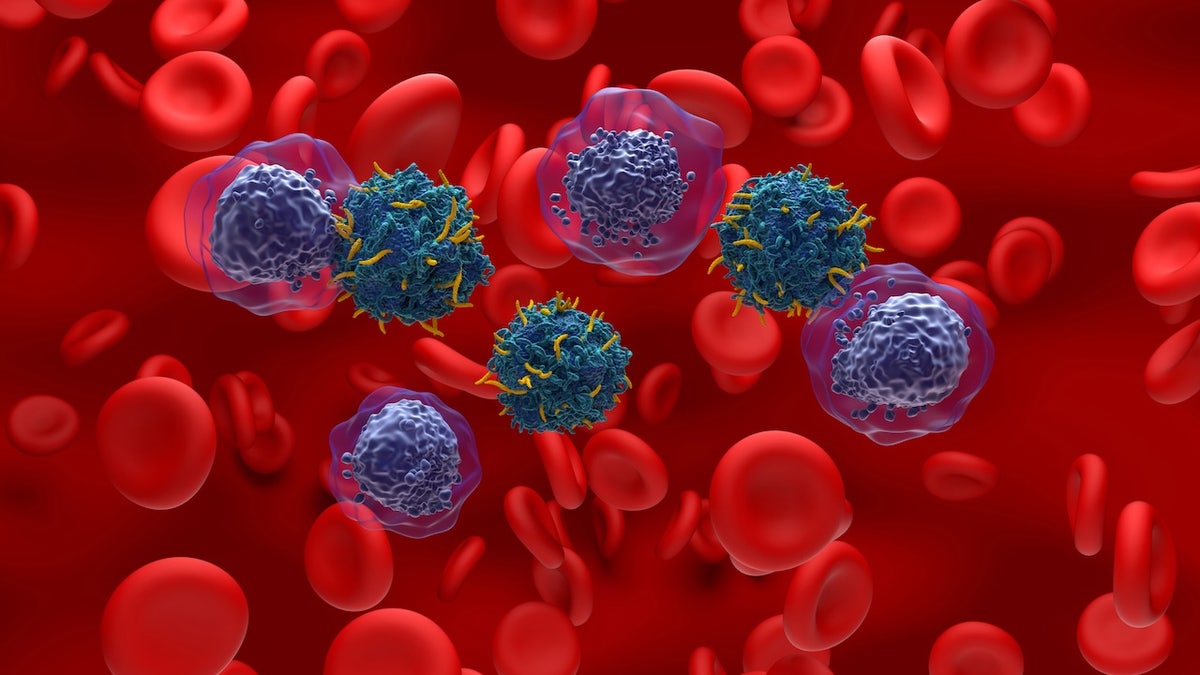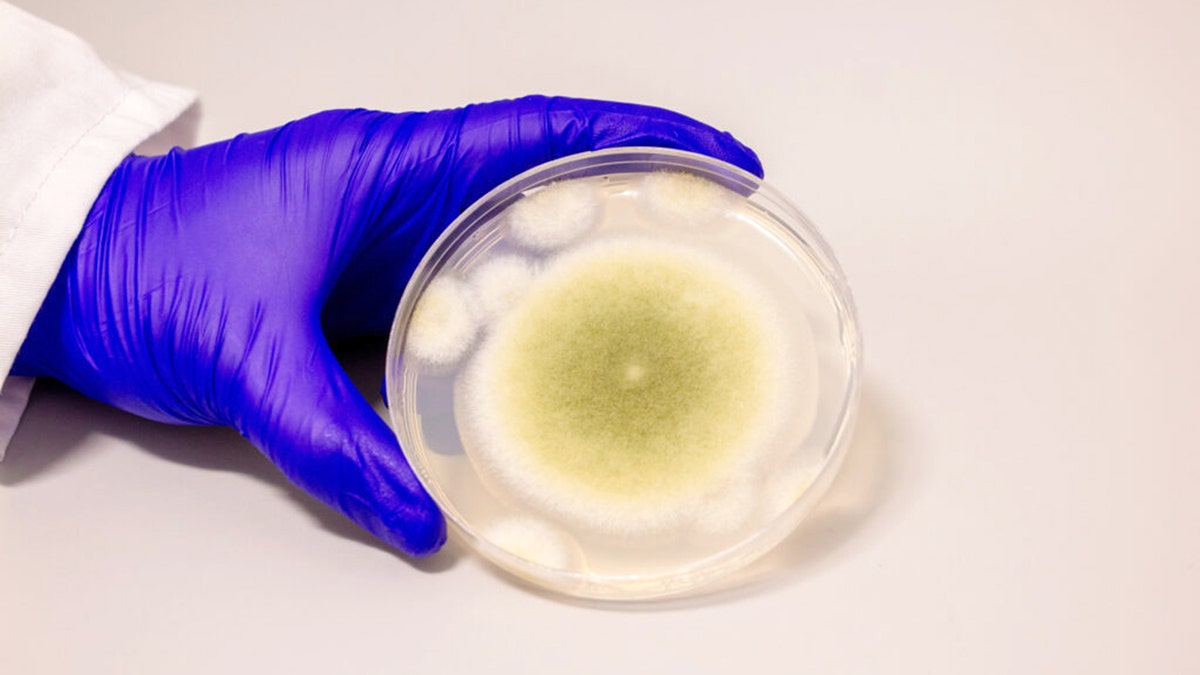NutNow you can listen to the Fox News items!
A potentially fatal fungus known as “Pharaoh’s Fungus” could offer an unexpected way to fight cancer, according to recent research.
Scientists at the University of Pennsylvania modified molecules of the fungus – which is officially called Aspergillus Flavus – to create a new compound and improve their death -death properties.
“The fungi gave us penicillin,” said Dr. Xue (Sherry) Gao, a professor associated with Upenn and the leader of the study, in a statement. “These results show that there are still many more medicines derived from natural products.”
Researchers find
The findings were published in the journal Nature Chemical Biology.
Aspergillus Flavus is found in leaves and composed of decay, as well as in trees, plants and some crops, according to the Mayo clinic.
An example of Aspergillus Flavus cultivated at the GAO laboratory of the University of Pennsylvania. (Bella Ciervo / Upenn)
Although the fungus does not jeopardize the healthiest people, it can cause respiratory problems for those who have weak immune systems or who take certain medicines.
Some of the most severe complications of the fungus may include bleeding in the lungs and infections that jeopardize life in the brain, heart and kidneys, stated the Mayo Clinic.
Story of the “curse”
After the archeologists opened King Tut’s tomb in the 1920’s, several members of the excavation team died suddenly, feeding rumors of a “curse” on which they dared to interfere with Pharaoh’s break, according to the Upenn statement.

After archaeologists opened King Tut’s tomb in the 1920’s, members of the excavation team died suddenly, feeding the rumors of a “curse” on those who upset Pharaoh’s rest. (Historica Graphica Collection/Images Heritage/Getty Images)
Decades later, doctors said that the spores of fungi, which had been latent for thousands of years, could have infected the team.
In the 1970’s, he passed again, declared college.
A dozen scientists entered another tomb, this time in Poland and ten died in a few weeks. It was said that subsequent investigations revealed the presence of Aspergillus Flavus on the grave.
Potential to fight cancer
Now, the same fungus linked to King Tut’s tomb could have the ability to combat leukemia in a new form of cancer therapy.
“There are a variety of compounds capable of being produced by fungi,” Gao told Fox News Digital.
These compounds can be toxic to different cells, as he said, depending on the “biological management we can mitigate”.
Cancer could be detected three years before diagnosis with an experimental blood test
The study aimed to find a specific type of compound: ribosomal and post-translationally modified synthesized peptides, or “ripps”, within Aspergillus Flavus, which was previously shown to be a good source.
When this compound can enter cancer cells, Gao said, it may stop its growth.
“Cancer cells are divided uncontrollably,” Gao said in launch. “These compounds block the formation of microtubules, which are essential for cell division.”

First author Qiuyue Nie and co -author Maria Zotova, on the left, purify samples of the fungus in the Upenn laboratory. (Bella Ciervo / Upenn)
When mixed with human cancer cells, it was found that two variants of the molecules of these ripps had powerful effects against leukemia cells, researchers found.
Another variant performed and two FDAs approved for decades to treat leukemia (Cytarabina and Daunorubicine).
Potential limitations
Tiffany Troso-Soval, MD, a medical oncologist and New York-based cancer consultant, warned that this study, which was carried out in cellular crops, is still in the early stages.
Your favorite alcoholic beverage could be related to a fatal form of cancer, according to the findings of the study
“It is still far from applicable to use in humans with leukemia,” said Troso-Andoval, who was not involved in the study, told Fox News Digital.
Speaking of Ripps, the doctor told Fox News Digital: “What do they refer to [in the study] It is basically a rare type of bioactive molecules that have isolated from this fungus. “”
Click here to get the Fox News app
There are multiple subtypes of leukemia, pointed out on a piece-pit, including acute and chronic forms.
“A treatment may not work [another] Type of leukemia, “he said. More tests are needed to determine which subtypes may contain the active molecule.

Acute myeloid leukemia (AML) is a type of blood cancer. Once the identified compound is capable of entering cancer cells, it may stop their uncontrolled growth, according to researchers. (Istock)
Researchers said that the compound explored in the study had little or no effect on breast, liver or lung cancer cells.
This suggests that its disturbing effects only work in certain types of cells, which will be an important consideration when developing medicines.
Click here to register -you are in our health newsletter
In the face, researchers are planning to test the potential of the fungus in animal models and, in short, human trials.
Gao told Fox News Digital that he is “excited about what nature can create and how can our society benefit.”
For more health items, visit www.foxnews.com/health
The study was supported by the National Health Institutes, the University of Pensilvania, the Welch Foundation, the Molecular Biophysical Biophysics Program in the Houston area, the Texas Cancer Prevention and Research Institute and the National Science Foundation.
#fungus #Pharaoh #curse #shows #promise #kill #cancer #cells
Image Source : www.foxnews.com
